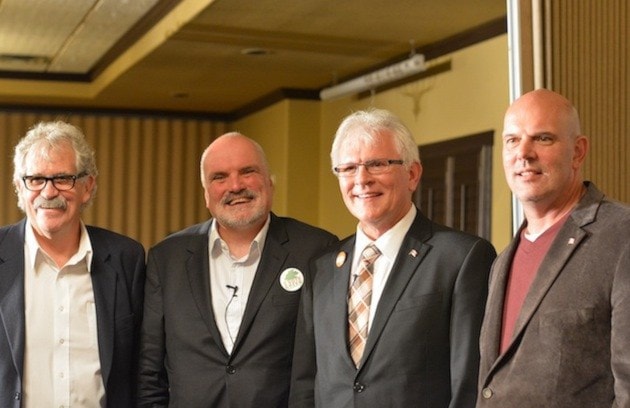In the 2015 federal election, Nelson residents had to re-think their identity. Having become accustomed (for better or worse, depending on your political views) to being the NDP-leaning town that helped BC Southern Interior MP Alex Atamanenko get elected in three previous elections, the city was suddenly cast out into a different landscape.
In the federal government’s riding re-distribution process of 2013, Nelson, Kaslo and Salmo were moved into the East Kootenay riding of Kootenay-Columbia, a riding long controlled by the Conservatives. For local leftists, this was culture shock. For Conservatives, it was like coming home.
So the big question during the election was: would the leftist leanings of Nelson, Kaslo, and Salmo shift the balance and defeat Conservative incumbent David Wilks, who won handily in the 2011 election before the riding redistribution?
Among those who wanted to defeat Wilks, the debate about strategic voting sometimes seemed to eclipse debate on substantive election issues. It seemed clear that the three strong candidates opposing Wilks (Wayne Stetski, NDP; Don Johnston, Liberal; and Bill Green, Green Party) could spit the anti-Conservative vote. (Another candidate, Libertarian Christina Yahn, dropped out of the race.)
A strong social media movement advocated strategically voting for the NDP as the party that came second in the 2011 election and was therefore in the best position to defeat Wilks.
The Liberals responded by insisting that what happened in the past did not necessarily dictate the future, and that Don Johnson could as easily defeat Wilks. The Greens strenuously argued against strategic voting in any form. If you believe in us, vote for us, they said.
The four candidates came to Nelson for an engaging debate before an audience of about 200 while a poll indicated the race was a dead heat between the NDP and Conservatives.
In one of the most exciting election night contests in the country, the lead in the neck-and-neck race between Wilks and Stetski bounced back and forth until almost midnight when the last polls were counted. At one point in the evening the CBC and Canadian Press declared Wilks elected — and he even gave a victory speech that he later had to recant. Stetski eventually won by 282 votes.
In Kootenay-Columbia 63,203 of the eligible 85,653 voters turned up at the voting booth — a 73.79 per cent turnout. In the 2011 election, the voter turnout was 63 per cent.
The results: Stetski 23,529 (37.23 per cent); Wilks 23,247 (36.78 per cent); Johnston 12,315 (19.48 per cent); and Green 4,115 (6.51 per cent).
Although they didn’t win the seat, local Liberals consoled themselves with the fact that they were the only ones to increase their share of the vote in Kootenay-Columbia over the 2011 election — by 16 per cent. All of the other parties’ share of the vote went down — the Greens dropping by 0.08 per cent, the NDP by 1.62 per cent, and the Conservatives by 13.3 per cent. A Liberal party strategist in the riding has speculated that it was the Liberal increase that pulled enough votes from the Conservatives to allow the NDP to win.
But we’ll never know for sure, and in the meantime, Justin Trudeau is prime minister with a Liberal majority, and the NDP has named Stetski as its critic for national parks.
In the South Okanagan West Kootenay riding to the south and west — a re-designed and re-named version of part of the riding to which Nelson used to belong — Dick Cannings of the NDP was elected over Conservative Marshall Neufeld.
